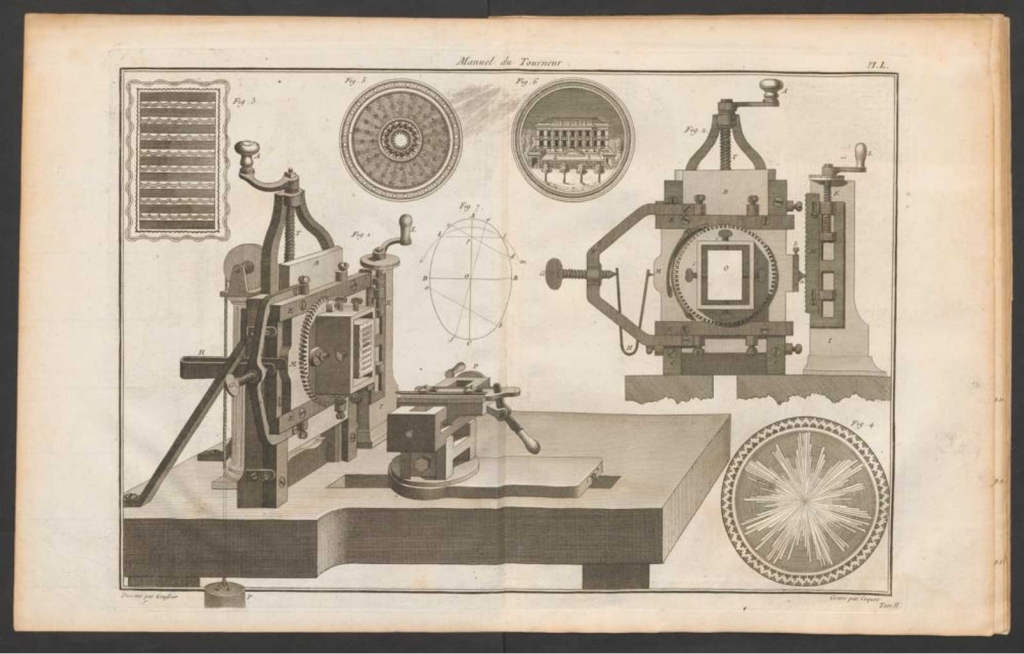
Welcome to Guilloche
The term “guilloche” is also used more generally for repetitive architectural patterns of intersecting or overlapping spirals or other shapes, as used in the Ancient Near East, classical Greece and Rome and neo-classical architecture, and Early Medieval interlace decoration in Anglo-Saxon art and elsewhere. Medieval Cosmatesque stone inlay designs with two ribbons winding around a series of regular central points are very often called guilloche. These central points are often blank, but may contain a figure, such as a rose.[1] These senses are a back-formation from the engraving guilloché, so called because the architectural motifs resemble the designs produced by later guilloché techniques.
Engine turning machines were first used in the 1500–1600s on soft materials like ivory and wood and in the 18th century it was adopted for metal such as gold and silver.[4][5] Some accounts give the credit of developing tightly-packed engraved guilloché decoration to the Nuremberg glass-making dynasty of the Schwanhardt family in the 17th century,[6] using a wheel to engrave the glass.
Engine turning machines manufactured in the traditional fashion with cast iron and heavy wood bases and precision scraped machined surfaces have been made up to ca 1967 (e.g. Neuweiler und Engelsberger). Individuals continue the craft of making these elegant machines but they are in very limited quantities.[7]
A Guilloche Machine was granted a US Patent in 1968 by Wilhelm Brandstatter.[8] The original assignor was a firm called Maschinenfabrik Michael Kampf KG. A photo of this machine can be seen at Turati Lombardi’s history page.[9]
In the 1920s and ’30s, automobile parts such as valve covers, which are right on top of the engine, were also engine-turned. Similarly, dashboards or the instrument panel of the same were often engine-turned. Customizers also would decorate their vehicles with engine-turning panels similarly.
Guilloche describes a narrow instance of guilloche: a design, frequently architectural, using two curved bands that interlace in a pattern around a central space. Some dictionaries give only this definition of guilloche, although others include the broader meaning associated with guilloché as a second meaning. Note that in the original sense, even a straight line can be guilloché, and persons using the French spelling and pronunciation generally intend the broader, original meaning.[10][11][12] Translucent enamel was applied over guilloché metal by Peter Carl Fabergé on the Faberge eggs and other pieces from the 1880s.[13]
Recent Comments